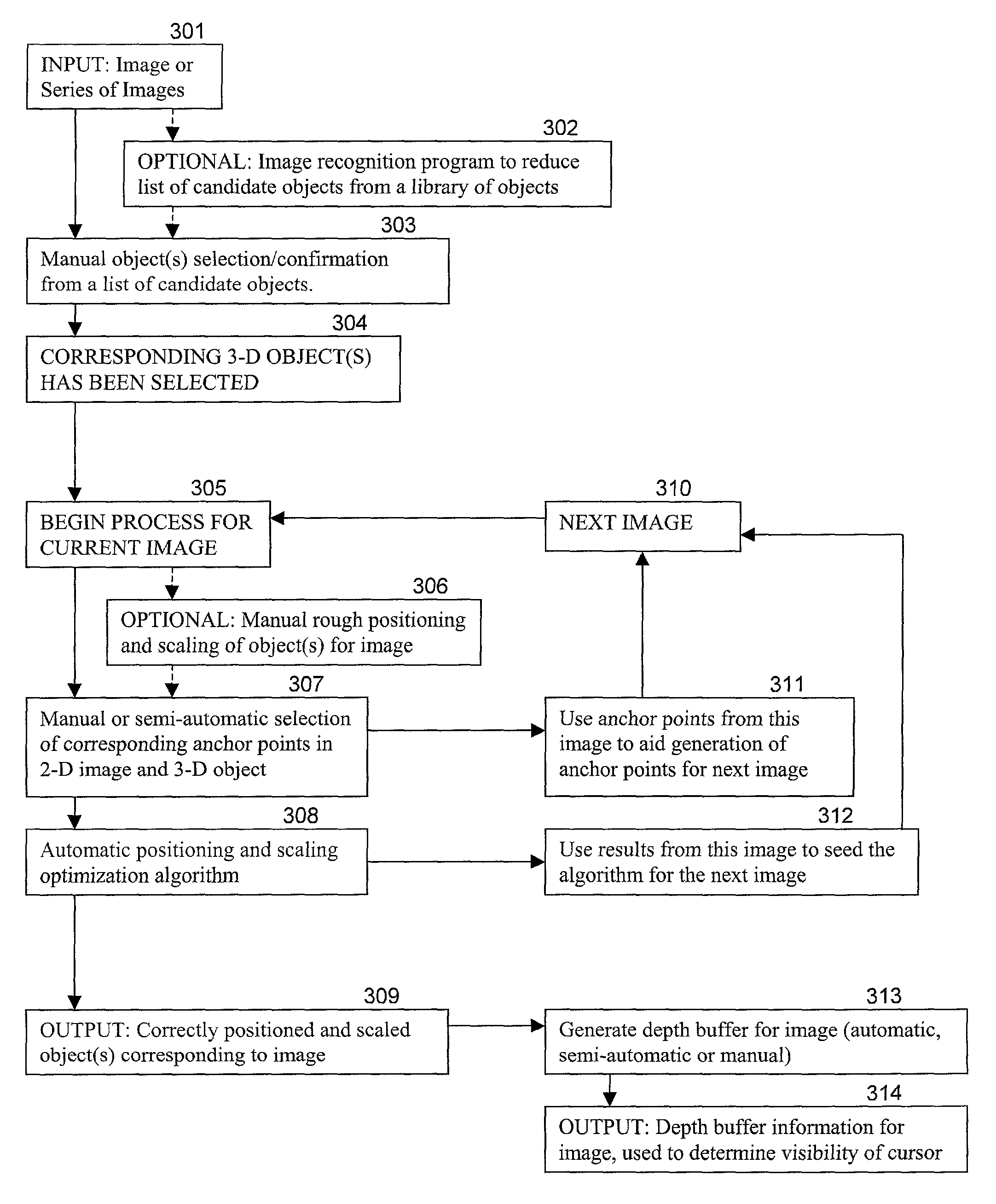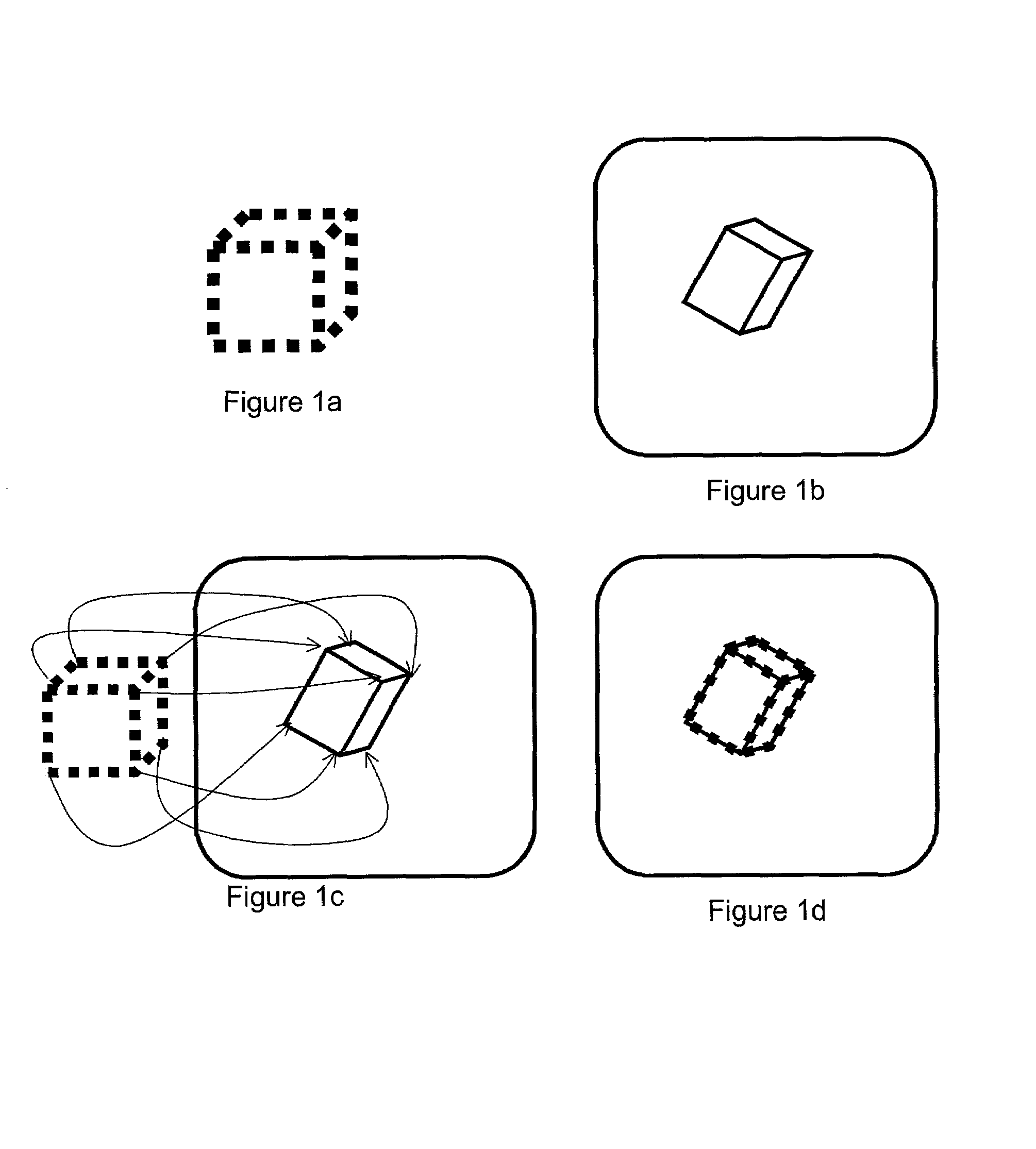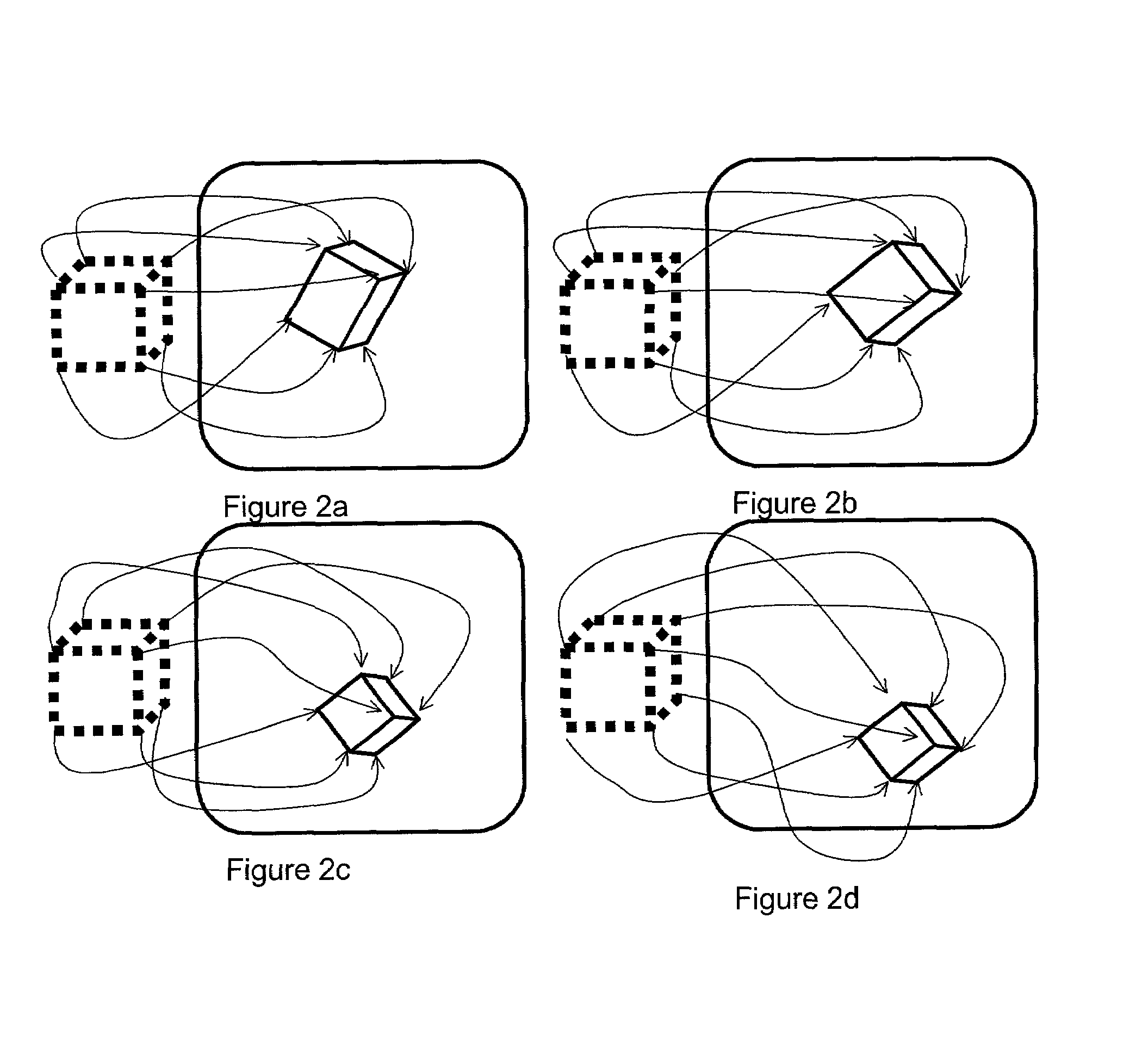Coordinating haptics with visual images in a human-computer interface
a human-computer interface and visual image technology, applied in the field of haptic human-computer interfaces, can solve the problems of obviating the time-consuming, and currently largely unsuccessful, process of creating three-dimensional models from two-dimensional images, and achieve the effect of less complex
- Summary
- Abstract
- Description
- Claims
- Application Information
AI Technical Summary
Benefits of technology
Problems solved by technology
Method used
Image
Examples
example implementation
[0040]FIG. 3 is a flow diagram of one implementation of the present invention. The method begins with an image or sequence of images 301. An initial haptic model is selected, by image recognition 302, manual selection or definition 303, or a combination of both. Once the initial haptic model has been selected 304, the haptic model can be transformed to align with the present image 305.
[0041]The transformation can begin with a manual rough positioning and scaling of the haptic model 306, in some cases easing the remaining tasks. Points of correspondence, called anchor points in the figure, can then be identified on the haptic model and the visual image 307. The transformation can then be determined by solution for transformation parameters that yield an acceptable error metric 308, producing a correctly positioned and scaled haptic model for the object in the image 309. The haptic model can be used to generate depth information for the two-dimensional image 313, enabling appropriate ...
examples
Single Object, Single Image Example
[0050]FIG. 1(a,b,c,d) illustrates the present invention as applied to a single object in a single image. FIG. 1b shows an image as displayed in a display medium such as a computer screen. An object is represented 101 in the image; in the example, object 101 is a rectangular polyhedron represented in the image as rotated and tilted relative to the viewer. FIG. 1b shows a simple haptic model of a cube, with six faces defined for interaction is a force feedback interface. The haptic model comprises handles positioned at each of the cube's corners. The handles collectively define the haptic surfaces of the cube. The generality of the handles and the rules for modifying the haptic model in accordance with the handles determines the range of objects that the haptic model can represent.
[0051]FIG. 1c shows the haptic model with its handles placed in correspondence with the corners of the visual representation of the object. FIG. 1d shows the resulting hapt...
PUM
 Login to View More
Login to View More Abstract
Description
Claims
Application Information
 Login to View More
Login to View More - R&D
- Intellectual Property
- Life Sciences
- Materials
- Tech Scout
- Unparalleled Data Quality
- Higher Quality Content
- 60% Fewer Hallucinations
Browse by: Latest US Patents, China's latest patents, Technical Efficacy Thesaurus, Application Domain, Technology Topic, Popular Technical Reports.
© 2025 PatSnap. All rights reserved.Legal|Privacy policy|Modern Slavery Act Transparency Statement|Sitemap|About US| Contact US: help@patsnap.com



